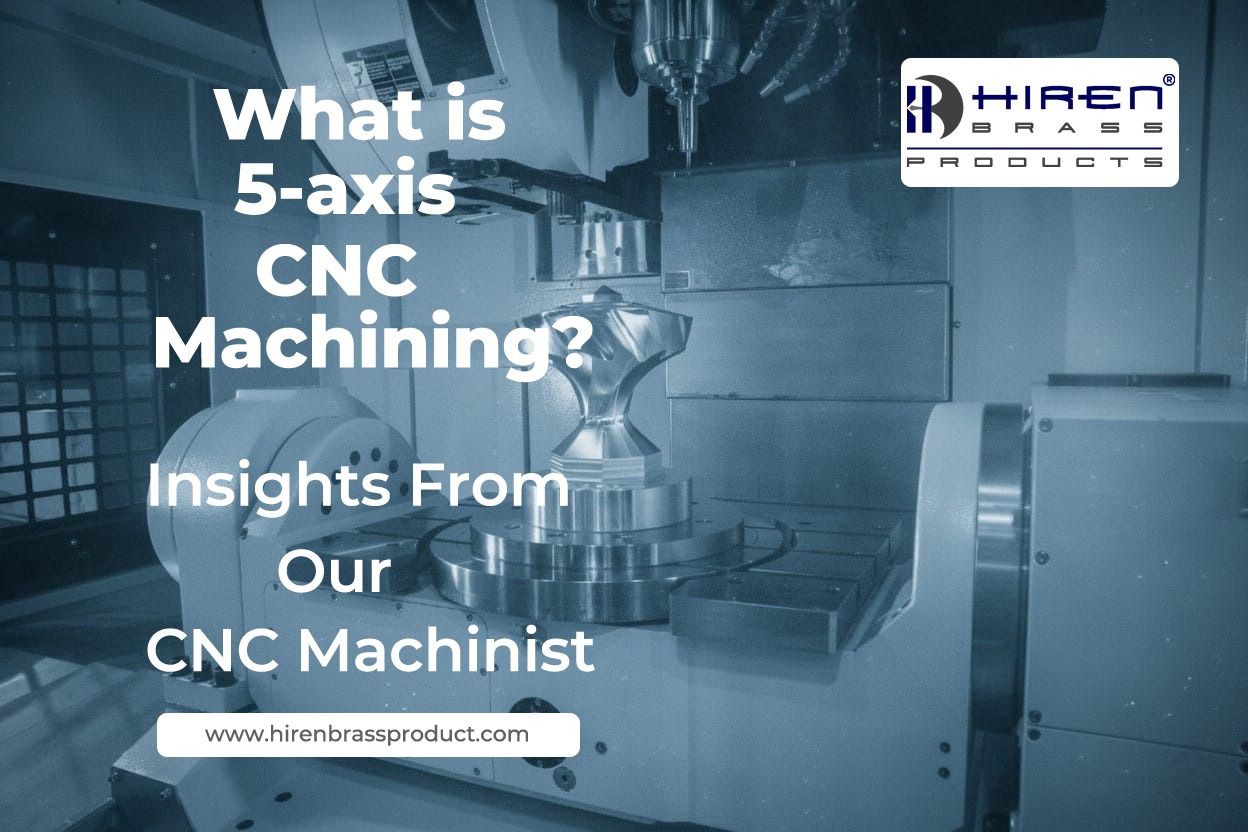
Five axis CNC machining is simple to explain when you have seen it run. The tool does not stay locked to straight movements. It tilts, rotates, and reaches angles normal mills never touch. That freedom is why manufacturer use it for parts that demand complex curves and tight features.
People always ask, “What is a 5-axis CNC machine, and what are the five axes?” I will break it down in this guide step by step. We will look at how the machine moves, how it programs the tool path, and why certain jobs only make sense on five axis.
I am not here to give textbook talk. You will see real machining logic. If you want to understand the foundation and the real benefits, you are in the right place.
Exploring the 5 Axis CNC Machine: Beyond Traditional Machining
A 3-axis mill cuts straight. It moves in X, Y, and Z. Good for flat faces and simple pockets. 5-axis takes that and adds tilt and rotation. Now the tool can swing around the part instead of forcing the operator to flip it again and again.
The first time you watch a 5-axis machine move, it feels like cheating. The head leans into corners, follows curves, and keeps the cutter at the perfect angle. No awkward setups. No stacking fixtures. Less chance to lose alignment.
This is why high-precision manufacturers use it for aerospace blades, medical implants, mold cavities, and any part with geometry that refuses to sit flat. Three axis gets the job done for basic shapes. 5-axis steps in when “basic” is not enough.
The Mechanics Behind 5 Axis CNC Machining
A 5-axis machine still uses X, Y, and Z travel. The difference comes from the two rotary axes that tilt and rotate the part or the spindle. That movement keeps the tool pointed where it needs to cut.
In a trunnion-style setup, the table tilts and rotates. In a swivel-head setup, the spindle does the motion. Both achieve the same idea - reach angles a flat machine cannot hit without flipping the part.
Tool paths come from CAM software. The machine follows the code, adjusting angle and depth at the same time. That lets the cutter stay short and rigid. Short cutters mean less chatter, cleaner walls, and better surface finish.
One setup holds datums tight. No repositioning. No stack-up error from flipping the part. You cut more faces in one shot, and tolerance stays locked.
That is the real mechanic behind five axis. Controlled tilt. Controlled rotation. Better tool position. Better accuracy. Fewer hands touching the part.
Five Degrees of Movement Explained
A standard mill gives you three moves. X goes left to right. Y goes front to back. Z goes up and down.
That handles flat work and straight cuts.
Five axis adds angle control. A-axis tilts around X. B-axis tilts around Y. Some machines use a C-axis that rotates around Z instead.
Different builders choose different rotary pairs, but the idea stays the same. The machine leans and rotates the tool so you do not flip the part by hand.
That motion keeps edges clean, hits odd angles in one go, and holds tolerance because the workpiece stays clamped from start to finish.
Programming and Tool Path Generation
5-axis work starts before the machine moves. You load the CAD model into CAM software and build tool paths that control every angle and depth. No guessing. The software decides how the cutter approaches the part.
5-axis programming needs clean geometry. Sharp corners, odd surfaces, and deep pockets take more time to plan. You set tilt limits, check collision paths, and define how far the head can lean without hitting the workpiece.
Tool Center Point control keeps the cutter tip on track when the head tilts. It stops the machine from gouging the part when angles change mid-cut.
When the paths look right, you post it to G-code and run a simulation. That step saves broken tools and crashed spindles. Real machinist never skip it.
Good programming makes machining smooth. Bad programming wastes cutters and time. In 5-axis work, the tool path is half the job.
Advantages that Set 5 Axis CNC Machining Apart
Five-axis shines where regular mills struggle. You clamp the part once, hit complex angles fast, and come out with cleaner surfaces and tighter tolerances. It turns hard geometry into simple work.
Reduced Setup Time
One clamp. One reference point. No spinning the part across multiple fixtures. Less handling keeps tolerance tight and cuts hours from the job.
Ability to Machine Complex Geometry
Curved faces, deep pockets, and angled features cut clean in one pass. No odd fixtures. No awkward tricks. Just direct access to every surface.
Improved Surface Finish
Short cutters stay rigid. Less vibration. Smooth walls. Sharp details. Five-axis lets the tool lean into the cut instead of stretching for it.
Versatility for Different Parts
Prototype today, production tomorrow. Complex CNC parts, Aerospace parts, medical shapes, mold work, turbine pieces. One setup style handles a wide mix without slowing down.
Industries and Projects That Benefit Most from 5 Axis CNC Machining
Five-axis work shows its value in parts where shape, accuracy, and finish cannot slip. Anywhere you see tight tolerances and complex surfaces, you will see these machines running.
Aerospace shops use them for blades, brackets, and structural parts with curved faces and multiple angles. Medical manufacturers rely on five-axis for implants and surgical tools that must fit the human body with zero guesswork. Mold makers cut deep cavities and smooth contours without hand finishing. High-end automotive, robotics, and energy parts also sit in this same category.
If your product has sweeping surfaces, critical angles, or you need top-tier finish straight from the spindle, five-axis is the tool that gets it done.
Need precision parts with complex geometry? Reach out and Request Quote for five-axis CNC machining services tailored to tight-tolerance production.

